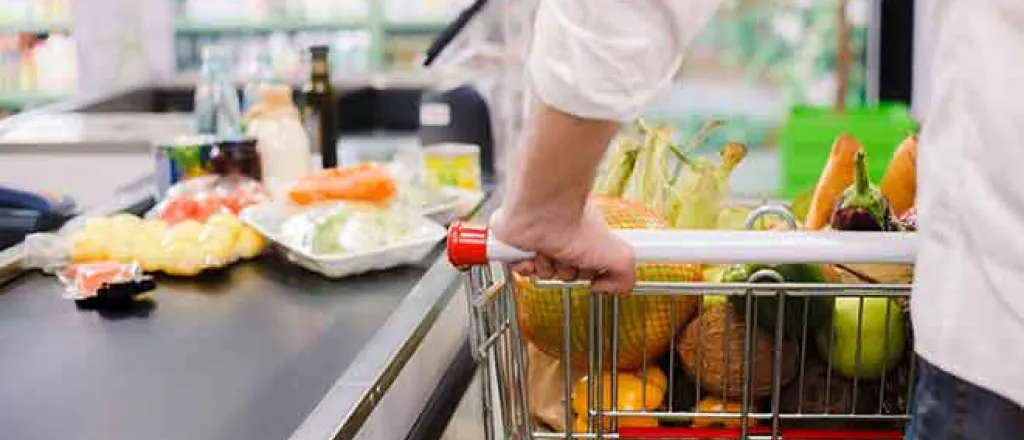
What’s next after the FTC said the biggest grocers were inflating food costs?
(Ohio Capital Journal) The Federal Trade Commission in March released a report saying that the three largest grocers “accelerated and distorted” food costs amid supply disruptions caused by the coronavirus pandemic. It also said that prices — and profits — remain high for Kroger, Walmart and Amazon even after the supply kinks have straightened themselves out.
But the country’s trade watchdog didn’t say in its report what might be done about it. The agency this week might have given a hint.
The commission is already suing to block a proposed merger between Cincinnati-based Kroger and Boise, Idaho-based Albertsons, arguing that the deal will “eliminate fierce competition … leading to higher prices for groceries and other essential household items for millions of Americans.”

© iStock - Yingko
But that’s unrelated to the findings of the “6(b)” report, which was started during the pandemic in November 2021. It found problems with consolidation in the grocery sector even without the Kroger-Albersons merger.
Asked if the FTC planned to do anything about those problems, an agency official speaking on background on Monday said, “The report outlines several areas where further scrutiny by the FTC and policymakers is warranted. The report doesn’t specifically spell out any enforcement actions to be taken as a result of the report, but the report will inform the FTC’s future work as the Commission reviews potentially anticompetitive mergers and conduct as it works to protect consumers.”
The report itself found several broad areas in which it said the three big grocers were using their size to suppress competition.
One had to do with the big boys’ use of “on time, in full,” or OTIF, contracts with their suppliers. Because they’re such huge customers, they’re able to get strict guarantees that they’ll have their orders completely and promptly fulfilled or the supplier has to pay a steep penalty.
The FTC report said that at the beginning of the pandemic, virtually no grocers were insisting that the terms of their OTIF contracts be met — an acknowledgement that supply-chain disruptions made it impossible. But as time wore on, some of the biggest grocers reimposed them with a vengeance, the report said.

© iStock - Ridofranz
“Even as the supply chain crisis brought on by the pandemic continued, some retailers reimposed or even heightened the standards for their OTIF policies later in 2020,” it said. “For example, Walmart tightened its OTIF requirements in September 2020, requiring suppliers to achieve 98 percent OTIF compliance to avoid fines of 3 percent.”
Imposition of the contracts had an anticompetitive effect because, in a time of scarcity, they directed limited supplies of some items to the biggest grocers while their smaller competitors went begging, the report said.
In addition, large grocers are able to use their heft to negotiate constant, relatively low prices from suppliers, a practice known as “everyday low pricing.” Meanwhile, their smaller competitors depend on producer promotions to offer certain items at temporarily low rates.
As the pandemic set in and producers were already struggling to fill orders, they had little incentive to voluntarily reduce prices. That created another mismatch between the biggest grocers and their smaller competitors, the FTC report said.

Federal Trade Commission Building Washington DC © Chris Sorensen
“Promotions designed to increase sales made little sense when those producers were unable to meet existing demand,” it said. “These changes affected retailers differently depending on their pricing model. Most notably, these trade promotions reflect a significant amount of money within the industry, and so the competitive impact of these differential effects (or of the promotions generally), may warrant further study.”
More broadly, food prices have jumped 25 percent over four years and they remain high even as supply problems related to covid have eased. Grocers have said their costs remain high, but according to the FTC report, food and beverage retailers saw their revenue rise to 6 percent over total costs in 2021 — higher than the previous peak of 5.6 percent in 2015. Then in the first three quarters of 2023, it went even higher — to 7 percent over costs.
It seems that might be an avenue of further inquiry.
“This profit trend casts doubt on assertions that rising prices at the grocery store are simply moving in lockstep with retailers’ own rising costs,” the report said. “Examining the cause or nature of rising industry profits is beyond the scope of this limited study into pandemic-related supply chain disruptions. However, the question warrants further inquiry by the Commission and policymakers.”
Ohio Capital Journal is part of States Newsroom, a nonprofit news network supported by grants and a coalition of donors as a 501c(3) public charity. Ohio Capital Journal maintains editorial independence. Contact Editor David Dewitt for questions: info@ohiocapitaljournal.com. Follow Ohio Capital Journal on Facebook and Twitter.















